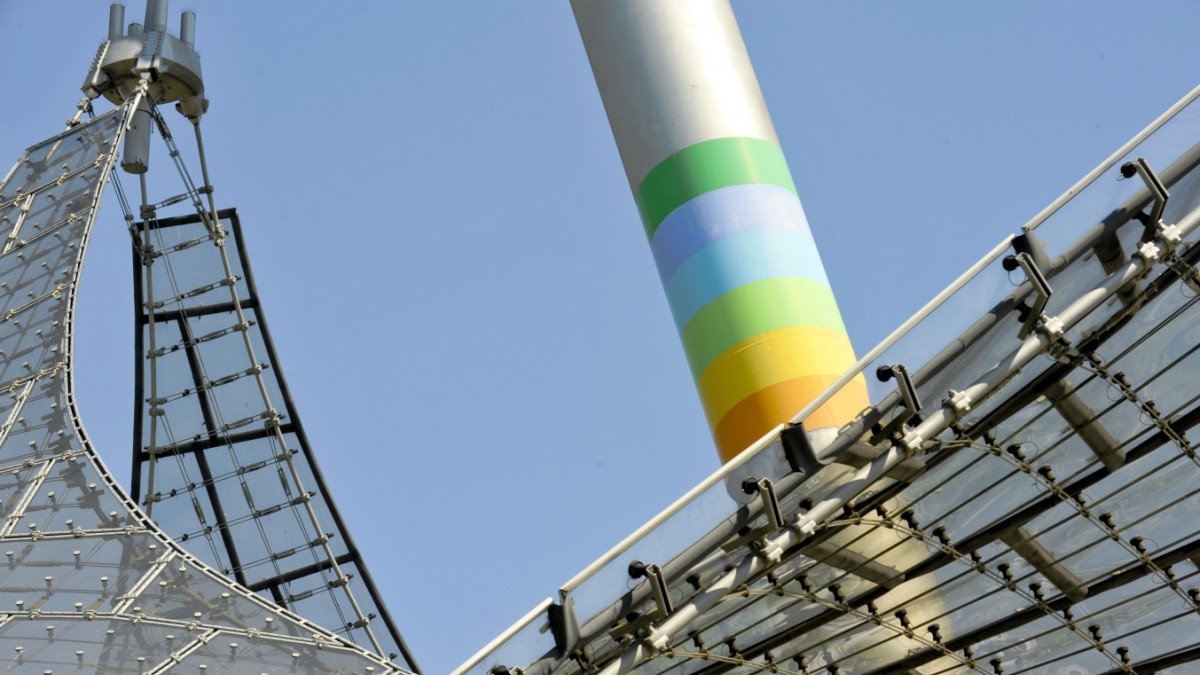The city of Munich has taken a small step towards adding the Olympic Park to the list of World Cultural Heritage Sites. However, it is only a small step in a great marathon across many instances. Until the goal is in sight, “you definitely need to be patient,” says Jörg Haspel, head of Icomos Germany: “Maybe ten or twenty years is not unrealistic.” Haspel should know: His organization is the national branch of the International Council for the Conservation of Antiquities, which in turn advises the United Nations cultural organization (UNESCO) when it comes to antiquities, collections, and sites worthy of the World Heritage title.
The Olympic Park has just cleared the first hurdle, city planning consultant Elizabeth Merck reported Monday, to the occasion of the screening of the documentary “The Modern Legacy of the Olympic Games.” It emerged from the ICOMOS conference in November 2019. Shortly before that, Lord Mayor Dieter Reiter submitted a preliminary application for World Heritage status to the Bavarian State Ministry for Science and the Arts. This has now been approved by the Council of Experts, but it only means: after the summer recess, the Bavarian Council of Ministers will decide whether to forward the application to the Federal Conference of Education Ministers. And then a national classification is created there, and other federal states also have something to offer. So it will take some time for all the proposals to be processed in this country alone. This is far from the end.
Wiepke van Aaken, Project Manager for the “World Heritage Olympiapark”, talks about a “multi-stage evaluation process, national and international” and explains: “This is not a formal application, and its results are certain from the start.”
Of course, ICOMOS chief Haspel gives Munich’s request a good chance. He noted that only two of the 1,121 World Heritage sites are currently associated with sport: the ancient facilities at Olympia and – as part of the University City in Mexico City – some of the buildings that were used for the 1968 Summer Games. In addition, Haspel continues, The cultural heritage of the 20th century is still underrepresented: Olympic Park will be the second youngest ensemble on the list, only the Sydney/Australia Opera, completed in 1973, has a shorter history.
For ICOMOS Vice President Sigrid Brant, art historian and conservationist, Olympic Park is an “avant-garde architectural system that is not just limited to the stadium.” The professor talks about “democratic architecture” because the Olympic Park connects sports and parks and also includes apartment complexes in the former Olympic Village. Marion Schön, Managing Director of Olympiapark GmbH, rightly notes that their collection, which has been a listed building since 1998, is “the world’s best reused Olympic site, and also as a local leisure and entertainment precinct”.
Like city councilor Merk, Schöne also stresses that the application to be recognized as a World Heritage site is not for advertising purposes. “We don’t want a label for tourism or marketing, we want a vibrant park used,” Shaun said Monday. This is entirely in the spirit of Jörg Haspel, who also wants to turn Olympiapark into “not a museum of sports or architecture”. His colleague Brandt added with the rating The global heritage It’s “about perfect reward and perfect commitment, not financial advantage.”
As Elizabeth Merck sees it this way, she asserts that the app’s motivation is “not a feature, but a responsibility”: “We want to keep the garden alive for future generations.” Before the Olympic Park was upgraded to the status of a World Heritage Site, a generation of Munich residents would probably walk, roam, and walk through it.

Communicator. Reader. Hipster-friendly introvert. General zombie specialist. Tv trailblazer

